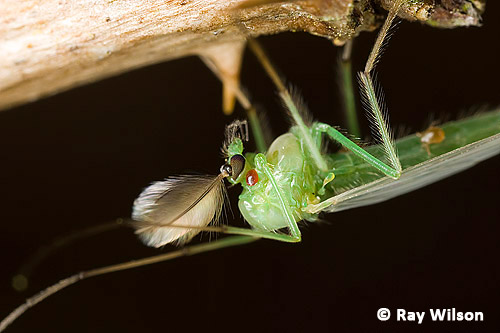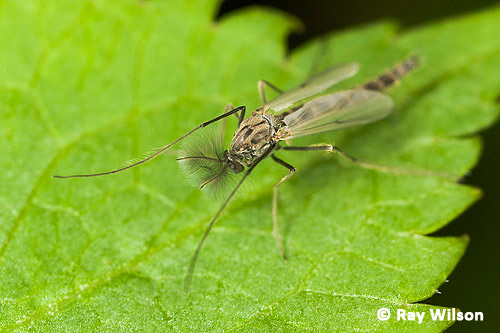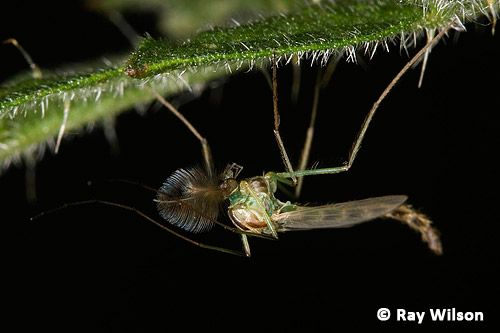


The mouthparts of Chironomidae midges are highly reduced or, in many cases, completely absent. All of their energy reserves as adults are derived during their larval stage and the sole purpose of the short-lived adults is to reproduce.

The elaborately feathered antennae of the males are used to detect airborne pheremones released by the female and enable the males to locate suitable mates without wasting valuable energy in aimless searching.

Like the mosquitoes which, apart from the lack of long piercing mouthparts, they superficially resemble, the Chironomidae have aquatic larvae, many of which are known as bloodworms due to their bright red colouration.

Out of the 5000+ species found globally, about 400 species of Chironomidae midges occur in the UK.
Ray Wilson owns the copyright of all images on this site.
They may not be used or copied in any form without prior written permission.
raywilsonphotography@googlemail.com